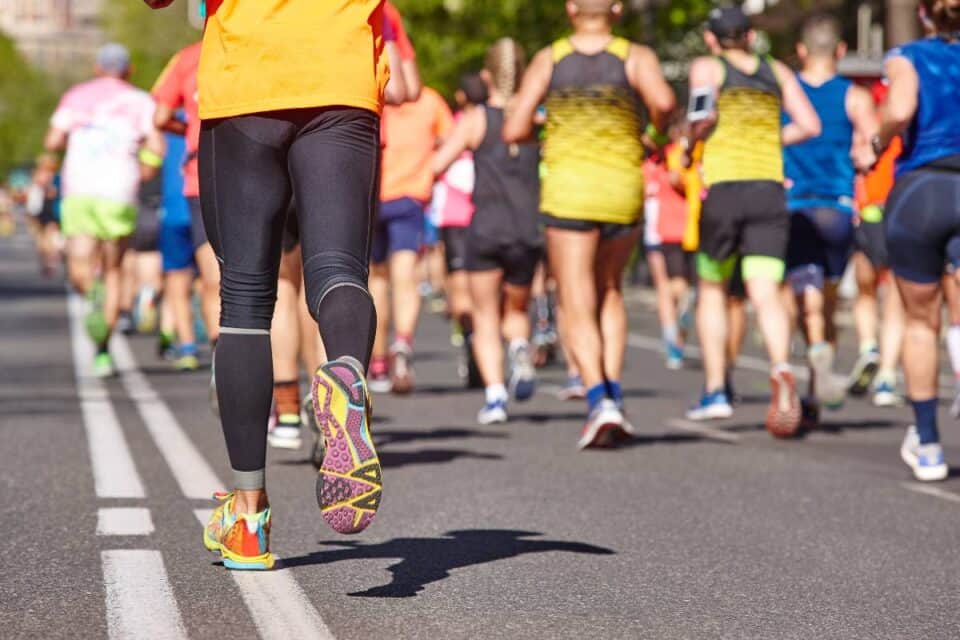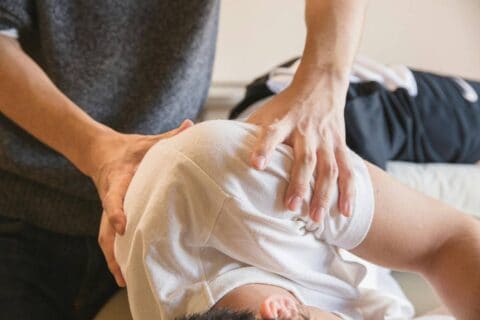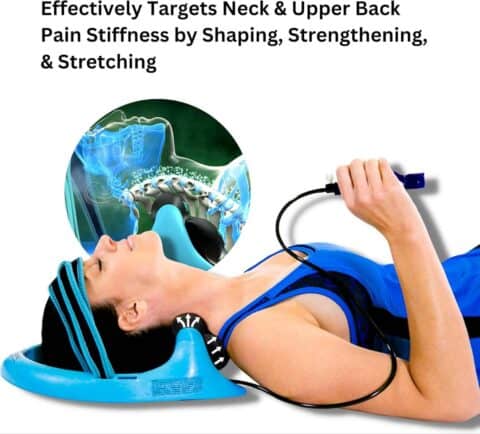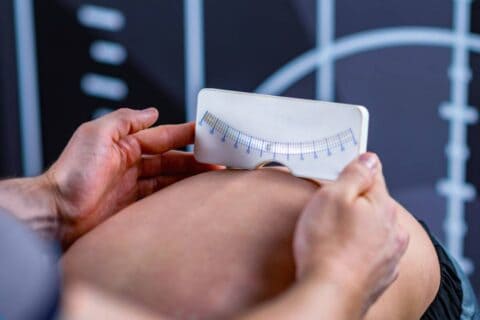Hello, fellow runners! Dr. Mario Tolj here, lets talk about the world of marathon running injuries. As a chiropractor in the Mr. Pleasant area of South Carolina, I’ve seen my fair share of running-related issues. With the 46th Annual Kiawah Island Marathon just around the corner, it’s the perfect time to talk about keeping your body in top shape for those grueling 26.2 miles.
Whether you’re a seasoned marathoner or lacing up for your first big race, understanding how to prevent and treat injuries is crucial. And let me tell you, the Kiawah Island Marathon is an event you don’t want to miss due to an injury like a stress fracture! So, let’s lace up and run through everything you need to know to keep your body happy and healthy on race day.
Key Takeaways
- Understanding common marathon running injuries is crucial for prevention and treatment.
- Proper training techniques and equipment can significantly reduce injury risk.
- Expert support, including heat therapy and personalized consultations, is available at The Kiawah Island Marathon
Table of Contents
The Kiawah Island Marathon Experience
Picture this: You’re running along a beautiful course, surrounded by maritime forests and the challenges of running on varied terrains that might cause knee pain, marshes, and grand homes. The sun is shining, there’s a gentle breeze, and you’re feeling strong. This isn’t just any marathon – it’s the 46th Annual Kiawah Island Marathon!
The new course for both the full and half marathon starts and finishes in the picturesque West Beach Village. Trust me, the only thing more breathtaking than the scenery is the feeling of crossing that finish line. And here’s a pro tip: staying at the Kiawah Island Golf Resort can make your marathon experience even more enjoyable. Your body (and feet) will thank you for the short walk to the starting line!
Experience the BodyFix Difference
Experience the difference that patient-centric, whole-body chiropractic care can make. Discover how The BodyFix’s unique approach addresses not just your pain, but your overall wellness for lasting results.
The Not-So-Fun Stuff: Common Marathon Running Injuries
Runner’s Knee
Alright, let’s start with the big one – the Runner’s Knee. It’s like that annoying friend who always shows up uninvited to the party. You might know it by its fancy name, patellofemoral syndrome1, but let’s keep it simple.
Here’s the deal: if you’re feeling a dull ache around the front of your knee, especially where your thigh bone meets your shin bone, you might be dealing with a Runner’s Knee. It’s not just the pain that’s a bummer – your kneecap might feel tender to touch, and sometimes it feels like your knee is unstable or grinding. Some runners even hear a lovely clicking sound. Not exactly the symphony you want on your run, right?
Now, why does this happen?
Well, it’s often a combo of things. Maybe your running form isn’t quite right, or your feet aren’t getting the support they need. Weak thigh muscles, tight hamstrings, or a stubborn Achilles tendon can all play a part too. And let’s be honest, sometimes we push ourselves a bit too hard in training, which doesn’t help. It’s all about putting kinetic chains in proper alignment that involves joints, muscles, fascia, ligaments, and nerves.
Achilles Tendinitis: The Heel’s Cry for Help
Next up, we’ve got Achilles tendinitis. This one’s all about that large tendon at the back of your heel – you know, the one named after that Greek hero with the vulnerable heel? Yeah, turns out our heels can be pretty vulnerable too, especially when we’re clocking serious miles.
If you’re feeling pain in your heel that gets worse when you run, walk, or even just stand on your tiptoes, your Achilles tendon might be throwing a fit. Sometimes, your heel might even look a bit swollen, like it’s trying to get your attention.
This usually happens when we overwork the tendon. It’s common during marathon training because, let’s face it, we’re asking our bodies to do a lot more than usual. Also, when your not strength training your gastroc and soleus muscles than the tendon feels like it has to do a ton of work. Key self treatments here include foam rolling the calve muscles and mobilizing the ankle joint through band work.
Shin Splints: When Your Legs Say “Enough!”
Ah, shin splints. If you’ve ever had them, you know they’re about as much fun as watching paint dry. Medically, we call this medial tibial stress syndrome, but that’s a mouthful, so shin splints it is.
So, you’re running along, feeling great, when suddenly it feels like someone’s taking a dull knife to your shins. That’s shin splints for you. It starts as an ache and can progress to knife-like pain if you ignore it (which, by the way, you shouldn’t!).
Shin splints can pop up for a bunch of reasons. Maybe you’ve ramped up your training too quickly, or your running shoes have seen better days. Sometimes it’s because of flat feet, tight muscles, or muscle imbalances. Feel your tibialis anterior muscle and see if its tender in some spots. I bet you it is!
Plantar Fasciitis: The Arch Nemesis
Last but not least, let’s talk about plantar fasciitis. This one’s all about that thick band of tissue that runs along the bottom of your foot from your heel to your toes. When it gets inflamed, boy, does it let you know about it.
Pain in your heel or the arch of your foot, especially first thing in the morning. It’s like your foot’s way of saying, “Hey, remember me? I’m not happy!“
Marathon training can make you more susceptible to this because you’re spending a lot of time pounding the pavement. Suddenly upping your mileage or running on hard surfaces can trigger it. And let’s not forget about those unsupportive shoes – they’re not doing you any favors.
Treating plantar fasciitis usually involves a mix of stretching, strengthening exercises, and therapy.
Understanding these common marathon injuries is crucial for every runner, from novices to seasoned athletes. By familiarizing yourself with these potential issues, you’re not just preparing for a race; you’re investing in your long-term running health.
Prevention Strategies
Now that we know what we’re up against, let’s talk prevention. As the saying goes, an ounce of prevention is worth a pound of cure – and that’s especially true when it comes to marathon running!
Proper Training Techniques
- Gradual mileage increase: Rome wasn’t built in a day, and neither is marathon endurance. Increase your mileage gradually to avoid overloading your body.
- Cross-training: Mix it up! Swimming, cycling, or strength training can help build overall fitness without the impact of running. Adding different angles to your workouts will allow you whole body to stay more well balanced.
Equipment Considerations
Investing in the right gear can make a world of difference. Here’s what to keep in mind:
- Choosing the right running shoes: Your feet are your foundation. Get fitted at a specialty running store to find the perfect pair for your foot type and running style. I recommend The Foot Store because I have heard my patients praise their top-tier assessment when analyzing feet during GAIT movements.
- Proper clothing for weather conditions: Dress for success! Moisture-wicking fabrics can help prevent chafing and keep you comfortable.
Nutrition and Hydration
Fuel your body right, and it’ll thank you. Stay hydrated and make sure you’re getting enough carbs and protein to support your training.
Warm-up and Cool-down Routines
Don’t skip these crucial steps! A proper warm-up prepares your body for the work ahead, while a cool-down helps kickstart recovery.
Treatment Approaches
Despite our best efforts, sometimes injuries happen. When they do, here’s how to handle them:
Heat Therapy for Injury Management
As a chiropractor, I’m a big fan of heat therapy. Here’s why:
- Benefits of heat treatment: Heat increases blood flow, relaxes muscles, and can help reduce pain.
- When and how to apply heat: Apply heat for 15-20 minutes at a time, several times a day. It’s especially effective for chronic injuries or before activity.
- Types of conditions: Heat therapy is particularly beneficial for chronic pain, muscle soreness, and joint stiffness.
Recent Research Insights
Contrary to conventional wisdom, recent studies have challenged the effectiveness of ice therapy for injury recovery. Some research suggests that icing may actually delay healing by interfering with the body’s natural inflammatory response.
For a more in-depth look at the debate between heat and ice therapy, including why ice might not be the best choice for your injury, check out my article “Ice vs. Heat: Why Ice Might Be Your Injury’s Worst Enemy”. It covers the latest research and provides a comprehensive overview of this important topic in injury management.
Rest and Recovery Techniques
Sometimes, the best thing you can do is nothing at all. Rest allows your body to heal and recover.
Strengthening Exercises
Building strength can help prevent future injuries. Focus on exercises that target your core, hips (GLUTES!), and legs.
Stretching and Flexibility Work
Flexibility can improve your running form and reduce injury risk. Incorporate mobility stretching like Yoga into your daily routine, focusing on major muscle groups used in running. Static stretching is of the old like reaching down trying to hold touching your toes. Getting some muscles to relax while other contract create a more well balanced body not only through flexibility but also neurologically.
Advanced Treatment Options: When You Need a Little Extra Help
Alright, runners, sometimes our bodies throw us curveballs that require more than just rest and heat. That’s where some of our advanced treatment options come in. Let’s chat about a couple of high-tech solutions that might just be your ticket to a pain-free running experience.
SpineMed Decompression: Your Back’s New Best Friend
Now, I know what you’re thinking – “But Dr. Mario, I’m a runner. Why are we talking about back pain?” Well, here’s the thing: your spine takes a beating during those long training runs, and sometimes it decides to complain loudly about it.
Enter SpineMed Decompression.

This isn’t your typical traction table – it’s a sophisticated, non-surgical treatment that can work wonders for back pain. 2 In fact, it’s not a traction table its technically a decompression table. A ton of people get those terms mixed around.
Here’s how it works:
You lie comfortably on a specially designed table that gently and precisely separates specific spinal segments. This creates a negative pressure inside the targeted discs, which is key because damaged discs rarely heal on their own due to constant pressure, even when you’re resting.
This controlled distraction does two crucial things.
First, it allows fluids, nutrients, and oxygen to flow back into the disc, kickstarting your body’s natural healing process. Think of it as rehydrating a dry sponge. Second, this negative pressure can help draw bulging or herniated disc material back toward the center, taking pressure off compressed nerve roots.
The result? Less pain, better spinal health, and a happier you on those long runs. It’s like a spa day for your spine, minus the cucumber water (though hey, staying hydrated is important too!).
I’ve seen SpineMed work magic for runners dealing with herniated discs, sciatica, and general lower back pain. It’s non-invasive, and many patients report feeling relief after just a few sessions.
Plus, it’s a great option if you’re trying to avoid surgery – because let’s face it, who wants to be laid up in bed when there are miles to run? Or it’s a great option for wellness care making sure your disc/s get decompressed from all that pounding on the roads.
Neuropathy Treatments: Keeping Your Nerves in Check
Now, let’s talk about something that affects more runners than you might think: neuropathy. This is when your nerves start misfiring, causing pain, numbness, or tingling sensations. It’s like your body’s electrical system has gone haywire.
Neuropathy, or nerve dysfunction, is another concern that can significantly impact a runner’s performance and quality of life3. Two types of neuropathy we frequently encounter in our practice are particularly relevant to the running community:
- Diabetic Neuropathy: For runners managing diabetes, this condition can present unique challenges. Diabetic neuropathy often affects the feet and legs, potentially altering sensation and balance – crucial factors in long-distance running and might contribute to overuse injuries.
- Post-Chemotherapy Neuropathy: Some of our most inspiring runners are those who have overcome cancer. However, the lingering effects of chemotherapy can include neuropathy, often manifesting as numbness or tingling in the extremities.
•Spinal Decompression: This technique help alleviate pressure on nerves and promote healing. By gently stretching the spine, we create space for compressed nerves, improving blood flow and nutrient delivery to affected areas. This can significantly reduce pain and enhance overall nerve function.
• Soft Tissue Techniques and Chiropractic Adjustments: These methods improve overall body mechanics and nerve function. Dr. Mario uses targeted manipulations to release muscle tension, correct misalignments, and restore proper joint motion.
• Summus Class IV Laser Therapy: This advanced treatment modulates inflammation and accelerates cellular repair. The deep-penetrating laser light stimulates cellular energy production, promoting faster healing and pain relief. It’s particularly effective for addressing both acute and chronic neuropathic conditions in runners.
• Electrical Muscle Stimulation: This therapy helps re-educate nerve pathways and improve muscle function. By applying controlled electrical pulses to targeted muscles, we can enhance strength, reduce pain, and improve overall neuromuscular coordination.
• Customized Rehabilitation: We develop specialized exercises to enhance proprioception and strengthen affected areas. Our tailored programs focus on improving balance, coordination, and muscle strength. This not only aids in recovery but also helps prevent future injuries, ensuring long-term running success.
• Nutritional Counseling: We guide patients on optimal dietary choices to support nerve health and overall recovery. Proper nutrition plays a crucial role in nerve function and repair. We educate runners on key nutrients and supplements that can accelerate healing and enhance overall performance.
It’s important to note that while these advanced treatments offer significant benefits, they’re most effective as part of a comprehensive care plan. We always begin with a thorough evaluation to understand each runner’s unique needs and challenges. From there, we develop a personalized treatment strategy that may incorporate these advanced options alongside more traditional approaches.
Our goal is to address not just the symptoms, but the root causes of your running-related issues. Whether you’re dealing with persistent back pain or the challenges of neuropathy, these advanced treatments can play a crucial role in getting you back on track – literally and figuratively.
Mental Preparation and Injury Management
Running a marathon isn’t just physical – it’s mental too. Here are some strategies to keep your mind as strong as your body:
- Psychological aspects of injury prevention: Stay positive and visualize success.
- Coping strategies for dealing with injuries during training: Focus on what you can do, not what you can’t.
- Mindfulness techniques for pain management: Practices like meditation can help manage pain and stress.
Recovery and Post-Marathon Care
Crossing the finish line isn’t the end of your journey. Here’s how to take care of yourself post-race:
- Immediate post-race recovery tips: Hydrate, refuel, and consider a light walk or gentle stretching. Get chiropractic treatment! You will hit some pot holes along the course. Get treated after and make sure problems don’t accumulate. Proactive care folks!
- Long-term recovery strategies: Give your body time to recover before jumping back into training.
- When to resume training after the marathon: Listen to your body and ease back into running gradually. Rest and keeping the body moving will be a balancing act.
As we wrap up our discussion on marathon injuries and preparation, let’s look ahead to some exciting running events in the Charleston and Mt. Pleasant areas. Whether you’re gearing up for your next big race or looking for a fun run to keep you motivated, there’s something for everyone in the coming months.
October 2024
Lowcountry Trail Half Marathon & 5K Run/Walk – October 5, 2024, Test your endurance on the beautiful trails of Johns Island County Park. With both half marathon and 5K options, this event is perfect for runners of all levels.
Isle of Palms Connector Run – October 5, 2024, Enjoy stunning views as you run across the IOP Connector in this annual 10K and 5K event. Plus, there’s a post-race family festival, making it a great day out for everyone. Proceeds benefit local child abuse prevention charities.
November 2024
Chili 5K Run/Walk – November 2, 2024 As the weather cools down, warm up with this 5K run/walk at Laurel Hill County Park in Mount Pleasant. There’s even a quarter-mile run for the kids!
These events are great opportunities to put your training to the test and enjoy the beautiful Lowcountry scenery. Remember, whether you’re running a 5K or a full marathon, proper preparation and injury prevention are key to a successful race.
For more information on these and other local races, be sure to visit Go South Charleston’s Events Page.
As you prepare for these exciting events, don’t forget that The BodyFix is here to support you every step of the way. From injury prevention to recovery and performance optimization, we’re committed to helping you achieve your running goals. Book your appointment today and let’s get you race-ready!
Is SpineMed Your Path to a Pain-Free Life?
Tired of living with back pain? Take our quick quiz to see if you’re a candidate for the breakthrough SpineMed Treatment. It only takes a few minutes to potentially change your life.
FAQs
How can chiropractic care benefit marathon runners?
When should a marathon runner consider seeing a chiropractor?
Can chiropractic care help prevent common marathon injuries?
How often should a marathon runner see a chiropractor?
What makes chiropractic care unique for runners?
Conclusion
Remember, running a marathon is a journey, not just a destination. By understanding common injuries, implementing prevention strategies, and knowing how to treat issues when they arise, you’re setting yourself up for success.
Ready to run your best marathon yet? Don’t let injuries hold you back! Schedule a consultation with us at The BodyFix to get personalized advice on injury prevention and treatment. Together, we’ll create a plan to keep you running strong to the finish line of the Kiawah Island Marathon. Book your appointment today and take the first step towards a healthier, stronger running journey!
Dr. Mario Tolj, the founder and lead chiropractor at The BodyFix, is a passionate and dedicated healthcare professional. With extensive experience and advanced training in chiropractic care, he is committed to delivering personalized, comprehensive treatments that address the root cause of his patients' concerns. Dr. Tolj's patient-centric approach, combined with his expertise in cutting-edge techniques and whole-body wellness, has helped countless individuals achieve lasting relief and improved quality of life.
Blog Disclaimer: The information provided on The BodyFix Chiro blog is for general informational and educational purposes only and is not intended as medical advice. These articles reflect our opinions and experiences but should not be used to diagnose or treat any health conditions. Always consult with your physician, chiropractor, or other qualified healthcare provider before starting any new treatment, exercise program, or making changes to your health routine. Any actions you take based on information from this blog are entirely at your own risk, and The BodyFix Chiro and its contributors disclaim any liability for the decisions you make based on this information.




